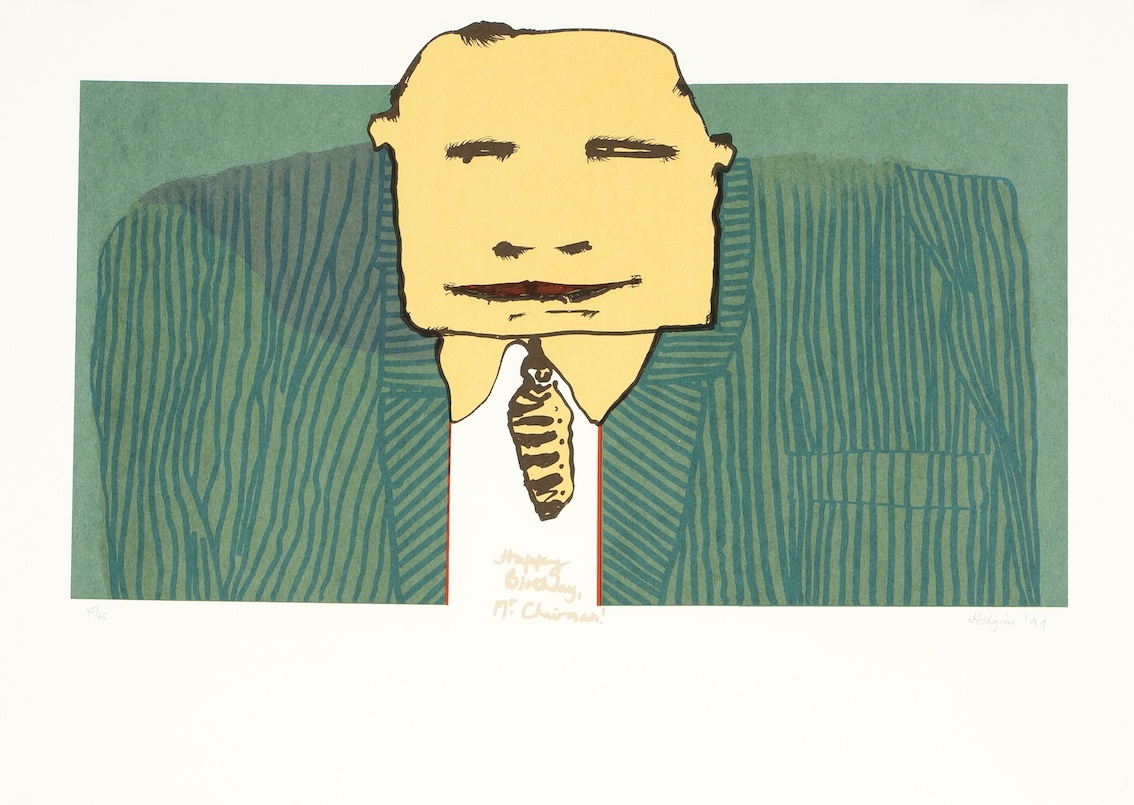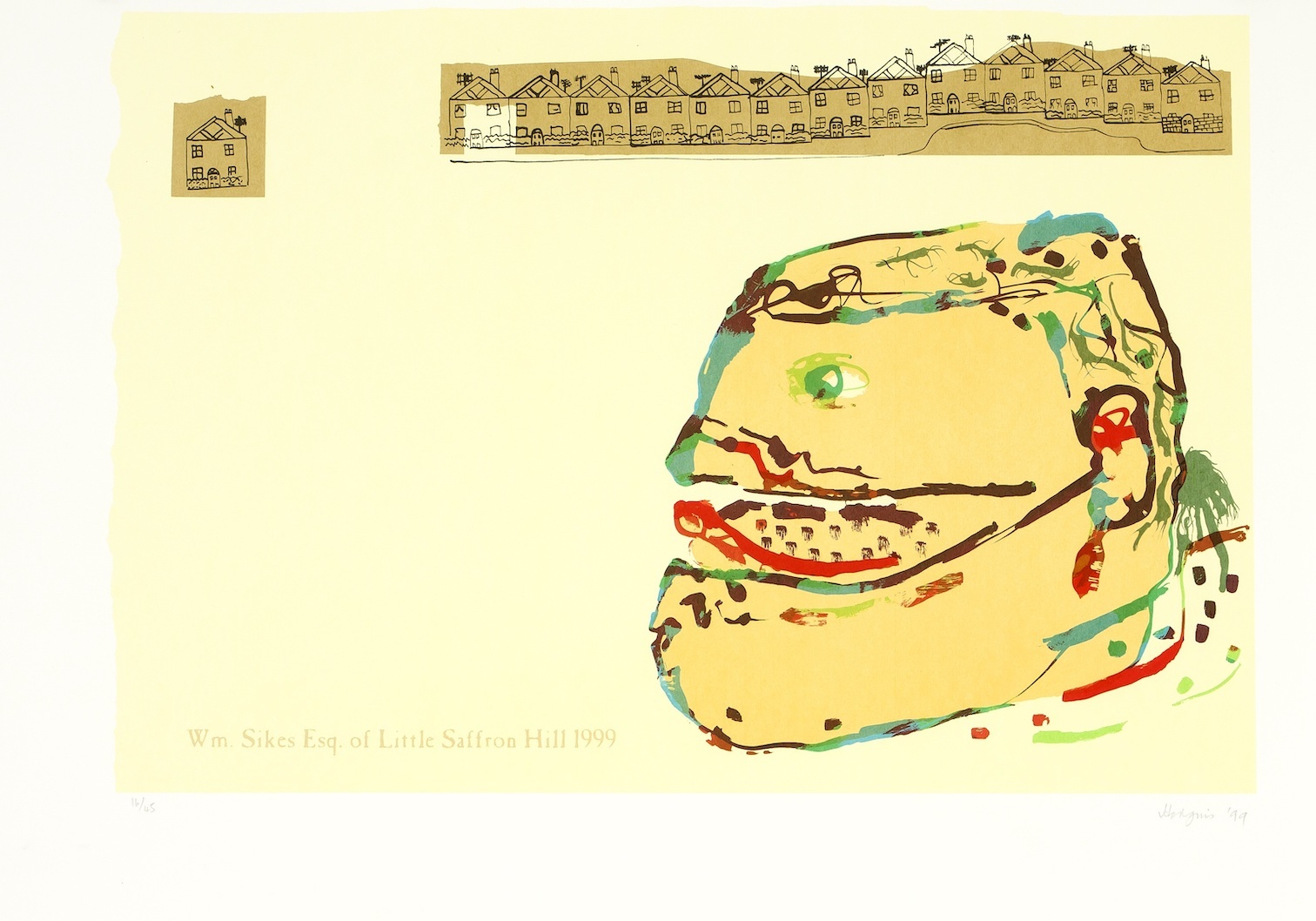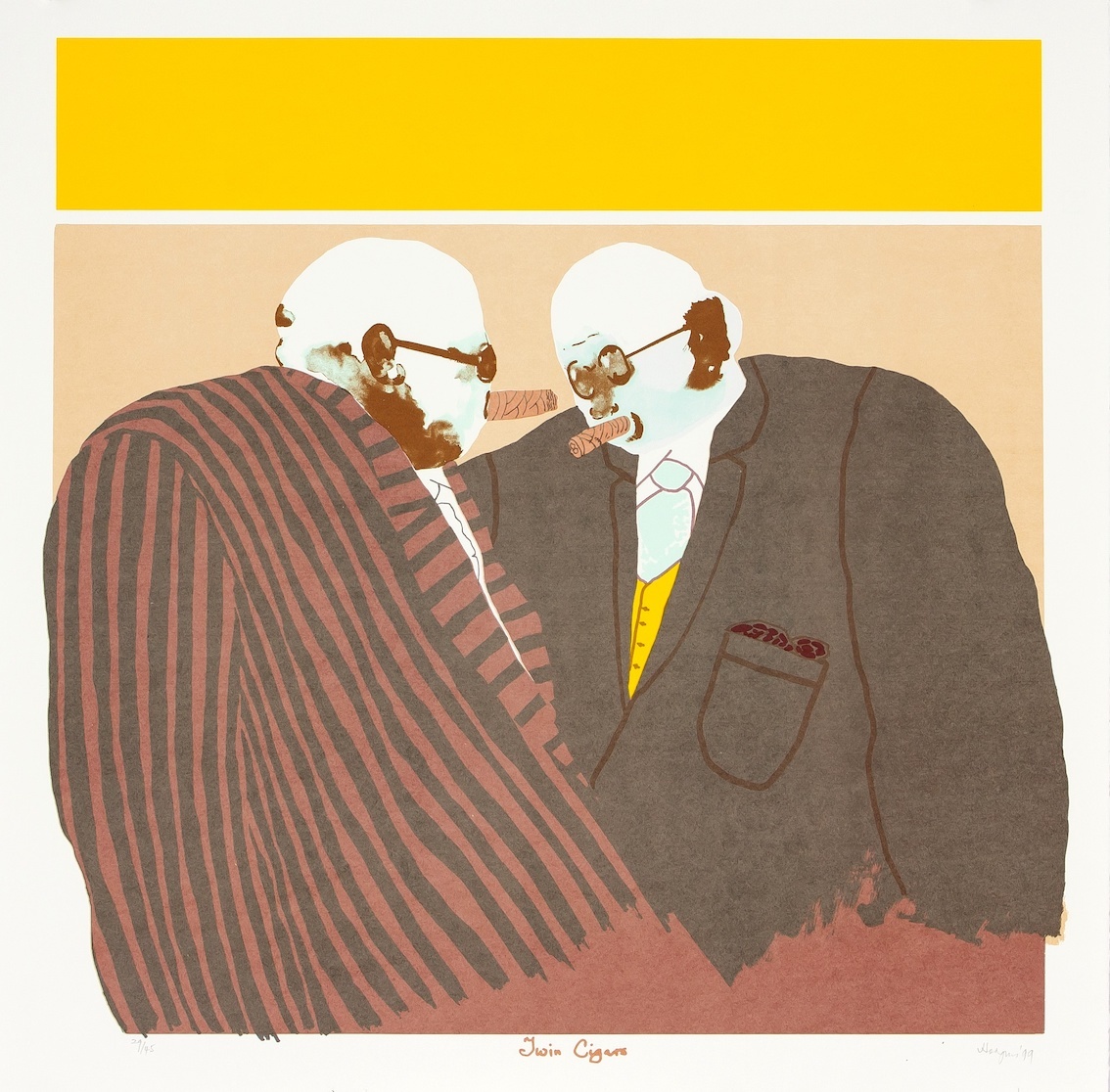Silkcreen Fantasies
Printmaking in the work of Robert Hodgins and Walter Battiss
15/02/2023 General News, Timed-Online Auctions, Insights
 Lot 34 | Robert Hodgins, Happy Birthday Mr Chairman | Estimate: ZAR 15 000 - 20 000
Lot 34 | Robert Hodgins, Happy Birthday Mr Chairman | Estimate: ZAR 15 000 - 20 000
South African art greats Walter Battiss and Robert Hodgins are well-known and well-loved for their magnificent oil paintings, but Battiss and Hodgins cognoscenti have also come to appreciate their printmaking. The artists – each in their own way – bring their unique perspectives, fantasies and curiosities to paper. From 16 February to 1 March Aspire’s Online sale EDITIONS features a gorgeous selection of Battiss and Hodgins screenprints.
WHAT IS SCREENPRINTING?
Screenprinting or silkscreen was originally used for commercial purposes from the 1920s, with artists only beginning to use the technique around the 1930s. To distinguish artworks from commercial prints, these works were initially referred to as ‘serigraphs’. The technique of screenprinting is different to other printing techniques. Prints such as linocuts, etching and lithography are directly made from a block or plate which is then transferred to paper. Screenprinting involves pushing ink through a mesh screen onto the paper using a stencilling technique, allowing for the artists to experiment with flat shapes and different hues of colour.
There are different methods of creating stencils for screenprinting which can include various media such as greasy paint, fabric or a design on transparent film. These stencils can be applied in different ways such as being painted onto the screen, placing them on the screen directly or by transferring the design onto the screen with a light-sensitive emulsion. More than one stencil is used for works that require various colours.
WALTER WHALL BATTISS

LEFT | Lot 42 | Walter Battiss, Conversation | Estimate: ZAR 15 000 - 20 000
RIGHT | Lot 40 | Walter Battiss, Streams | Estimate: ZAR 12 000 - 18 000
“Battiss not only brought (and brings) ongoing joy through many thousands of works of art that he left behind as the ‘ashes of his experience’, but his work and legacy provide inspiration to a younger generation of South African artists. Perhaps the greatest gift he gave to young people, whether artists or not, was his perennial ability to reinvent himself through the making of art”[1]
Within the thousands of ashes of experience that Walter Battiss gifted us, the vast variety of techniques found within his printmaking are quintessential to his oeuvre. Described by his biographer and friend Murray Schoenraad as using all the different graphic techniques to produce exceptional examples of “woodcuts, wood engravings, linocuts, silk screen prints and lithographs” Battiss was also “possibly the first South African artist to use the silk screen for pure aesthetic purposes and he is one of the few South Africans artists to do wood engravings and to use indigenous South African wood for his graphic art”.[2] Notably, the artist was also recognized abroad for his skills in the medium of colour woodcuts as seen with the inclusion of his work alongside 120 artists from all over the world in the International Colour Woodcut Exhibition at the Victoria and Albert Museum in London in 1954. The exhibition was organized in response to the declining interest at the time in graphic prints such as woodcuts and linocuts. Its aim was to showcase the vibrancy of these mediums.

Lot 44 | Walter Battiss, Fook Island | Estimate: ZAR 15 000 - 20 000
The six colour screenprints in the EDITIONS auction, Blue Head, Man and Butterflies, Three Pet Animals, Streams, Conversation and Fook Island, created between 1972 and 1974, showcase the years when Battiss, during his retirement, had more freedom to travel the world and explore new avenues within his art. It was also during this period that Battiss began conceptualizing, alongside fellow artist Norman Catherine, the extraordinary Fook Island with its own currency, alphabet, a map, history, passports, postage stamps, animals, plants, and people. Battiss himself created an alternate ego to exist in Fook Island, named King Ferd III.

LEFT | Lot 43 | Walter Battiss, Three Pet Animals | Estimate: ZAR 15 000 - 20 000
CENTRE | Lot 41 | Walter Battiss, Man and Butterflies | Estimate: ZAR 12 000 - 18 000
RIGHT | Lot 39 | Walter Battiss, Blue Head | Estimate: ZAR 10 000 - 15 000
ROBERT HODGINS

Lot 35 | Robert Hodgins, W.m. Sikes Esq. of Little Saffron Hill 1999 | Estimate: ZAR 14 000 - 18 000
“What is most striking about Hodgins’ prints is that they have about them the same if not seemingly similar deliberateness that his paintings do. The prints, of which Hodgins produces a very large number, are in and of themselves suggestive of many of the thoughts that dominated an artist who was more than just a thinking artist, but a historian and a critic as well.”[3]
Art historian Mpho Moshe Matheolane illustrates, in this quote, the importance of graphic works within Robert Hodgins’ oeuvre. Although largely recognized for his paintings, Hodgins’ prints beautifully showcase his ability to combine humour, historic and critical meaning, technique and his unique literary approach to his titles, such as Wm. Sikes Esq. of Little Saffron Hill 1999. The title layers old-fashioned British English with a name that alludes to William Sikes, the main antagonist of the novel Oliver Twist by Charles Dickens written in 1838.
Hodgins was one of the first artists that printed at the then newly established Cavarsham Press (KwaZulu-Natal), founded by Malcolm and Rosmund Christian in 1985. It was the first independent and all-inclusive printmaking studio in South Africa. Notably, Hodgins collaborated with artists William Kentridge and Deborah Bell on two projects there: Industry and Idleness (1986) and Little Morals (1991).

Lot 36 | Robert Hodgins, Twin Cigars | Estimate: ZAR 18 000 - 24 000
Although he had been exhibiting since the early 1950s, Hodgins was only properly recognized in 1981, after he had begun to introduce into his work the idea of satirizing figures in powerful positions, “in which the artist used his paintings and prints as a vehicle to parody men in uniform who hold positions of power”.[4] One such way was to use the symbol of a man in a suit, as seen in Weighed in the balance Found Wanting, Twin Cigars and Happy Birthday Mr Chairman.

Lot 37 | Robert Hodgins | Bank Queue | Estimate: ZAR 25 000 - 35 000
Lot 38 | Robert Hodgins | Weighed in the balance Found Wanting | Estimate: ZAR 12 000 - 16 000
[1] Siebrits. W. (2016). Walter Battiss: "I Invented Myself", The Jack M Ginsburg Collection. Johannesburg: The Ampersand Foundation. p.236
[2] Siebrits. W. (2016). Walter Battiss: "I Invented Myself", The Jack M Ginsburg Collection. Johannesburg: The Ampersand Foundation. p.47.
[3] Buys, A. (ed). (2012). A Lasting Impression: The Robert Hodgins Print Archive. Johannesburg: Wits Art Museum, p.207.
[4] Buys, A. (ed). (2012). A Lasting Impression: The Robert Hodgins Print Archive. Johannesburg: Wits Art Museum, p179.
Auction
EDITIONS |Timed-Online Auction
16 February - 1 March 2023